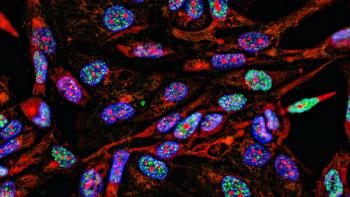
- Pharmaceutical Technology-10-02-2008
- Volume 32
- Issue 10
Review of Changes in Topical Drug Product Classification
This article summarizes the classification systems for topical liquid and semisolid dosage forms used for dermatological application and notes some differences between FDA and USP classification.
In Remington's ThePractice of Pharmacy, 5th edition, chapter LXVIII is dedicated to cerates, ointments, plasters, and papers, which are listed as solid extemporaneous preparations used externally (1). The 22 pages of this chapter carefully list the compositions and preparation procedures for 6 official cerates, 23 official unguentum, 7 official emplastra, 1 official Charta sinapis (mustard paper), and various unofficial topical preparations. Thus in 1907, classification of topical products was unambiguous and exactly defined within pharmacy practice.
During the next century, with the steady decrease in extemporaneous compounding, the introduction of highly effective topical steroids, and the adoption of over-the-counter monographs, the United States Pharmacopeia (USP) definitions of topical dosage forms became incomplete and ambiguous for classifying topical drug products. For example, USP does not define lotions but rather refers the reader to the sections describing solutions or suspensions (2). The definition of a water-removable ointment base begins "Such bases are oil-in-water emulsions...and are more correctly called 'creams'." Diprolene lotion 0.05% is an example of just how inaccurately a topical product can be classified. According to ThePhysician's Desk Reference, this reference-listed drug is "in a lotion base of purified water, isopropyl alcohol (30%); hydroxypropyl cellulose; propylene glycol; sodium phosphate monobasic monohydrate; phosphoric acid used to adjust the pH to 4.5" (3). Although it could be argued whether this slightly turbid alcoholic liquid should be classified as a solution or a suspension, neither scientific definition nor traditional use justifies this formulation being marketed as a lotion.
For these reasons, topical drug product classification has recently received attention from the US Food and Drug Administration and USP (4, 5). Although an official guidance has not been issued, the questions asked of sponsors during the development of topical products clearly indicates that a classification system combining definitions from the publication Center for Drug Evaluation and Research (CDER) Data Standards Manual (
USP drug naming and taxonomies
Topical dosage forms applied to the skin surface
As quoted in CDER Data Standards Manual,
A dosage form is the way of identifying the drug in its physical form. In determining a dosage form, FDA examines such factors as the physical appearance of the drug product, the physical form of the drug product before dispensing to the patient, the way the product is administered, the frequency of dosing, and how pharmacists and other health professionals might recognize and handle the product (6).
This definition can be contrasted to the shorter, simpler definition by Buhse et al.: "A dosage form is a pharmaceutical formulation that contains an active pharmaceutical ingredient and one or more excipients" (4).
The first tier decision point for the classification of a product is based on tissues to which the active is delivered. The broad categories are gastrointestinal tract, tissues or body fluids by injection, mucosal membranes, skin surface, or lungs (8). Although parallels can be drawn to the classification of nasal, ophthalmic, otic, urethral, and vaginal dosage forms (i.e., the mucosal membrane delivery route), this article's discussion is limited to dosage forms applied to the skin surface. The skin surface delivery route is further categorized as topical or transdermal. Topical is for the localized treatment of a dermatological condition, and transdermal refers to products that use the skin surface as a portal for the systemic delivery of active pharmaceutical ingredients. Although we think of semisolids for topical delivery and patches for transdermal delivery, it is possible to have transdermal gels and topical patches. An example of a transdermal gel is AndroGel (testosterone gel, Solvay Pharmaceuticals), 1% of which "provides continuous transdermal delivery of testosterone" (9). This article does not include transdermal products, rather it will be limited to topical dosage forms applied to the skin surface. In addition, products applied to normal skin for localized effect will not be discussed. Examples of this type of product includes Emla cream (lidocaine 2.5% and prilocaine 2.5%, AstraZeneca) and Lidoderm (lidocaine patch 5%, Endo Pharmaceuticals) (10, 11). The method for classifying topical dosage forms is clear for products applied for skin effects but can be ambiguous for products applied for localized effects (i.e., APIs targeted to underlying muscle, tendons, nerves, etc). Because bioequivalence to some of these localized effects products can be established using plasma assays, it is suggested that products applied to the surface of normal skin for localized effect be categorized as transdermal dosage forms.
CDER Data Standards Manual list of dosage forms for the delivery of pharmaceutical actives to the skin
Is the dosage form a liquid or semisolid?
Once the skin surface is determined as the delivery route, a topical dosage form for dermatological application is further categorized using a series of questions (4). The first question in the classification decision tree is, Is the dosage as supplied, and during use, either a liquid or a semisolid? If the answer is no, then the dosage form is an aerosol, cloth, lipstick, patch, plaster, poultice, powder, soap, sponge, spray, stick, or swab.
A list of liquid or semisolid dosage forms defined by CDER Data Standards Manual are provided in the sidebar "CDER Data Standards Manual list of dosage forms for the delivery of pharmaceutical actives to the skin." These topical dosage forms include jelly, liniment, oil, rinse, salve, shampoo, and tincture. Some of these terms could be considered obsolete for drug products. For example jelly, liniment, salve, and tincture could be better classified as solution, paste, or cream. The sidebar "Dosage forms to deliver pharmaceutical actives to the skin" contains a similar list of terms taken from the glossary published by the USP Pharmaceutical Dosage Forms Expert Committee (PDF EC) (5). The list of terms and definitions was divided into two parts, with the second part including "definitions of nonpreferred and/or outdated terms" (5). It should be noted that the dosage forms titled cleanser, pads, pledgets, scalp application, and wash have been used for approved FDA prescription products, despite these terms not being defined in either the PDF EC article or in CDER Data Standards Manual (5, 6).
If the dosage form is a liquid or semisolid, and not listed in Tables, then the next question in the decision tree is, Is it a liquid or a semisolid? (4). To help answer this question, Buhse et al. and CDER Data Sandards Manual define liquid as being pourable; it flows and conforms to its container at room temperature, and displays Newtonian or pseudoplastic flow behavior. A semisolid is defined as not being pourable; it does not flow or conform to its container at room temperature. It does not flow at low-shear stress and generally exhibits plastic flow behavior (4, 6). Thus to distinguish between a liquid and a semisolid, a rudimentary understanding of plastic and pseudoplastic flow behavior and Newtonian liquids is required. Because these references do not define these terms, it appears in keeping with FDA's interpretation to use descriptive definitions.
Dosage forms to deliver pharmaceutical actives to the skin (definitions provided in Reference 5. Bolded entries are terms being phased out of USP titles)
Newtonian fluids such as water and solutions containing only low molecular-weight material are characterized by viscosity that is independent of the rate of stirring. Thus, a plot of shear rate versus shear stress is linear and passes through the origin. Pseudoplastic flow behavior is characterized by viscosity decreasing with the rate of shear (i.e., shear thinning). Plastic flow behavior is characterized by a material behaving as a solid until a threshold stress is reached beyond which the material flows. The slope of the rheogram can be extrapolated to determine the yield value. Because a threshold stress is required before flow, the plot of shear rate versus shear stress can not pass through the origin for a material having plastic flow. Based on the data presented by Buhse et al., the plot of shear rate versus shear stress for both pseudoplastic liquids and plastic semisolids are characterized by a yield value (D/cm2 ) and a curved response to changes in shear rate (4). In a presentation, Buhse suggested that semisolids have yield values ≥ 200 D/cm2 , and liquids capable of conforming to the container have yield values <200 D/cm2 (12).
Solutions, suspensions, and lotions
Once it is decided that a liquid is being applied to the skin surface, the next question in the decision tree is, Is the liquid clear and homogeneous, a solid dispersed in a liquid, or an emulsion? (4). If the liquid is clear and homogeneous, then the dosage form is classified as a solution. A solution is defined as "a clear, homogeneous liquid dosage form that contains one or more chemical substances dissolved in a solvent or mixture of mutually miscible solvents." If the product is a solid dispersed in a liquid, then the dosage form is classified as a suspension. Suspension is defined as "a liquid dosage form that contains solid particles dispersed in a liquid vehicle." If the liquid is an emulsion, then the dosage form is classified as a lotion.
Before discussing lotions in more detail, two items of clarification are required. For the purpose of topical drug product classification, a liquid is pourable, flows and conforms to its container at room temperature, and displays Newtonian or pseudoplastic flow behavior. Although this definition is contained within the CDER Data Standards Manual, the term liquid is also a recognized dosage form and is defined as "a dosage form consisting of a pure chemical in its liquid state. This dosage form term should not be applied to solutions." It seems unlikely for a 100% active pharmaceutical ingredient (API) liquid to be developed as a topical drug product; however, it is clear that such a product would be classified as a liquid. Another CDER Data Standards Manual recognized dosage form term is emulsion, defined as "a dosage form consisting of a two-phase system comprised of at least two immiscible liquids, one of which is dispersed as droplets internal or dispersed phase) within the other liquid (external or continuous phase), generally stabilized with one or more emulsifying agents." (Note: emulsion is used as a dosage form term unless a more specific term is applicable, e.g., cream, lotion, ointment.) Thus in terms of dosage-form classification, a parenteral emulsion is more likely to be encountered than a topical emulsion because a topical emulsion would be further characterized as a cream, lotion, or ointment if the classification system by Buhse et al. is used.
As noted in the sidebar "Dosage forms to deliver pharmaceutical actives to the skin," the PDF EC considered lotion to be an outdated term that is no longer for use in the USP–National Formulary. The term topical lotion will be changed to topical emulsion, topical suspension, or topical solution. Thus, compendial taxonomy with regard to lotions is not in agreement with the Bushe et al. classification system currently being used by FDA.
The dosage form term lotion requires additional discussion. The current definition is that a lotion is "an emulsion, liquid dosage form. This dosage form is generally for external application to the skin." The current definition was adopted by the CDER Data Standards Manual on June 21, 2006. Previously, the term lotion had been used to categorize topical suspensions, solutions and emulsions intended for application to the skin. It was this ambiguity that resulted in a range of formulations, such as Diprolene (Schering Corp., Kenilworth, NJ) lotion, being classified as a lotion before 2006.
For at least the past year, it is typical for FDA to ask for a sample of product at the pre-IND meeting. Lotion dosage forms will be checked to determine whether they are pourable. This may seem like a simple test to pass, but if the product is non-Newtonian, then some shear may be required for the product to flow. For pump lotion dispensers, shear through the pump will deliver a flowing, easily spread product, or for lotion products in a bottle, a gentle squeeze of a full bottle, or shaking of a partially empty bottle induces flow. However, a product having a yield value as low as 20 D/cm2 , may not pour from an upended container with the closure removed. (The most familiar example of a pseudoplastic liquid is ketchup, once on the burger it spreads like a lotion, but pouring it from a full bottle is not always immediate.) When providing a lotion sample to FDA, be sure it readily pours from the container that you provide. Keep in mind that during evaluation by FDA, a pump or flip-top closure will probably be removed before upending the container. If the opening of the bottle is too constricted, then the product may not pour. It is best to provide product in the "to-be-marketed" packaging, rather than sending a small sample bottle for the initial FDA evaluation. If low shear is required for the product to flow, then a good shear rate versus shear stress plot should be provided.
One additional note on pseudoplastic liquids, it is almost always desirable for liquid formulations to be pseudoplastic. Shear thinning improves mixing during processing and thus provides a higher quality, increased homogeneity product. If anything is suspended in the liquid (e.g., suspended API or the internal phase of an emulsion), then having a high yield value is the primary mechanism for preventing separation of the product. Although pseudoplastic liquids may require care during pumping and transporting to ensure that nothing "shakes-out," in general the formulation advantages we associate with increased viscosity are really the benefits of pseudoplastic rheology. Thus, formulation selection should focus on delivery of the active and quality of the product and not a nonscientific concern about the product not pouring out of the bottle while the sample is at FDA.
Is the semisolid a paste, gel, ointment, or cream?
A paste is defined as "a semisolid dosage form, containing a large proportion (20–50%) of solids finely dispersed in a fatty vehicle. This dosage form is generally for external application to the skin or mucous membranes." For the decision tree, one must as the question, Does the semisolid contain >50% water and volatiles? If the answer is no, then one should ask, Does the semisolid contain a large proportion (20–50%) of dispersed solids? If the answer is yes, then the dosage form is classified as a paste. This "new" definition of a paste is much more detailed than the pre-2006 definition, which states that a paste is a semisolid dosage form that contains one or more drug substances intended for topical application. "Water and volatiles" percentage for all of the semisolid dosage forms is determined by loss on drying when heated at 105 °C until constant weight is achieved. Dispersed solids is not defined, but is presumably estimated from knowledge of the components and composition of the formulation.
A gel is defined as "a semisolid dosage form that contains a gelling agent to provide stiffness to a solution or a colloidal dispersion. A gel may contain suspended particles." This definition is footnoted with "A colloidal dispersion is a system in which particles of colloidal dimension (typically between 1 nm and 1 μm) are distributed uniformly throughout a liquid." For the decision tree, one must first ask the question, Does the semisolid contain >50% water and volatiles? If the answer is yes, then one must ask, Is the semisolid a solution or colloidal dispersion stiffened with a gelling agent? If the answer is yes, then the dosage form is classified as a gel.
Ointment is defined as "a semisolid dosage form, usually containing <20% water and volatiles and >50% hydrocarbons, waxes, or polyols as the vehicle. This dosage form is generally for external application to the skin or mucous membranes." For the decision tree, one should first ask, Does the semisolid contain >50% water and volatiles? If the answer is no, then one should ask, Does the semisolid contain a large proportion (20–50%) of dispersed solids? If the answer is no, then one should ask, Does the semisolid contain >50% of hydrocarbons, waxes, or polyols such as polyethylene glycol and <20% water and volatiles? If the answer is yes to both parts of the question, then the dosage form is classified as an ointment.
With this classification system, cream becomes the default dosage form. If one or both of the two criteria for ointment are not meet, then the product is a categorized as acream. Likewise if the criteria "containing >50% water and volatiles required for a gel" is met, but the semisolid is an emulsion, then the product is a cream. Cream is defined as "an emulsion, semisolid dosage form, usually containing >20% water and volatiles and/or <50% hydrocarbons, waxes, or polyols as the vehicle. This dosage form is generally for external application to the skin or mucous membranes."
Augmented, metered, and other modifiers
The CDER Data Standards Manual lists additional dosage form modifiers. Augmented ointments, lotions, and creams are listed. Each definition for an augmented dosage form carries the note: "CDER has decided to refrain from expanding the use of this dosage form due to difficulties in setting specific criteria that must be met to be considered 'augmented.'" Thus, use of the term augmented to describe a dosage form that enhances drug delivery does not appear to be a classification option for products currently in development.
Metered is an approved modifier for aerosol, spray, and gel.Gel, metered is defined as "a gel preparation, with metered dose valves, which allow for the delivery of a uniform quantity of gel upon each activation." Likewise, aerosol, metered is defined as "a pressurized dosage form consisting of metered dose valves which allow for the delivery of a uniform quantity of spray upon each activation," and spray, metered is defined as "a nonpressurized dosage form consisting of valves which allow the dispensing of a specified quantity of spray upon each activation."
Other modifiers appear in the CDER Data Standards Manual.Aerosol is modified by foam, powder, and spray. Patch is modified by extended release and extended release, electrically controlled.Shampoo is modified by suspension, and lotion is modified by shampoo.Spray is also modified by suspension. Although there are various orders for the modifiers, USP states that any dosage form for any drug substance can be unambiguously identified by a combination of taxonomic terms from each tier, taking the form: [drug substance][route of administration][physical state][release pattern].
Conclusion
Topical drug product classification with regard to the most common dosage forms advanced dramatically on June 21, 2006 when the CDER Data Standards Manual adopted recommendations from the Buhse et al. This resolved many of the ambiguities that contributed to confusion not only in CDER databases but also the NDC Directory and FDA Orange Book. Although these advances are appreciated within industry, additional modifications can further improve the classification system for topical drug products. Redundant or obsolete definitions such as tincture and liniment should carry notes that more-specific terms such as lotion or solution should be used when appropriate. Common dosage forms such as aerosols, sprays, and shampoos should become part of the Bushe decision tree on topical dosage form nomenclature. Commonly used dosage forms such as pledgets should be added to the CDER Data Standards Manual. The USP PDF Expert Committee suggestion to make the term lotion obsolete should be reconciled with the classification system used by FDA. Finally, the boundary between a liquid of pseudoplastic flow and a semisolid not flowing at low shear stress leaves considerable latitude for classifying an emulsion as either a cream or lotion. It is important to agree that while some formulations are clearly creams and others are clearly lotions, classification of formulations in the middle requires rheological characterization such as shear rate versus shear stress plots and not simply seeing whether the product pours.
David W. Osborne, PhD, is vice-president of product development at Dow Pharmaceutical Sciences, 1330 Redwood Way, Petaluma, CA,
Submitted: Jan. 3, 2008. Accepted: Apr. 11, 2008.
References
1. J.P. Remington, The Practice of Pharmacy (J.B. Lippincott Company, Philadelphia, PA, 5th ed. 1907), pp. 1256-1278.
2. USP 30–NF 25 (The United States Pharmacopeial Convention Rockville, MD, 2006), p. 624.
3. Physicians' Desk Reference (Thomson PDR, Montvale, NJ, 60th ed., 2006), p. 3020.
4. L. Buhse et al., "Topical Drug Classification," Int. J. Pharma. 295, 101–112 (2005).
5. K. Marshall et al., "Development of a Compendial Taxonomy and Glossary for Pharmaceutical Dosage Forms," Pharm. Forum 29 (5), 1742–1752 (2003).
6. CDER Data Standards Manual (Rockville, MD), http://
7. Code of Federal Regulations, Title 21 Food and Drugs, Section 314.101(d)9 .
8. "USP Topical Dosage Forms Nomenclature," available at http://
9. Physicians' Desk Reference (Thomson PDR, Montvale, NJ, 60th ed., 2006), p. 3330.
10. Physicians' Desk Reference (Thomson PDR, Montvale, NJ, 60th ed., 2006), p. 640.
11. Physicians' Desk Reference (Thomson PDR, Montvale, NJ, 60th ed., 2006), pp. 1107–1108.
12. M. Naser, "Pharmaceutical Nomenclature: Issues and Challenges,"presented at Advisory Committee for Pharmaceutical Sciences, Oct. 22, 2003, available at http://
Articles in this issue
about 17 years ago
Putting Together the Piecesabout 17 years ago
Integration the Easy Wayabout 17 years ago
EC Reviews: An Executive Country Review on Turkeyabout 17 years ago
Continuous Mixing of Solid Dosage Forms via Hot-Melt Extrusionabout 17 years ago
Trends: NAS Launches and NME Approvals Rise and Fallabout 17 years ago
To-Do List for 2009about 17 years ago
Complex Scienceabout 17 years ago
Pharma CapsulesNewsletter
Get the essential updates shaping the future of pharma manufacturing and compliance—subscribe today to Pharmaceutical Technology and never miss a breakthrough.





